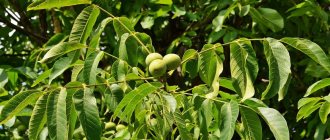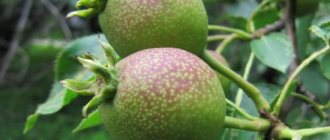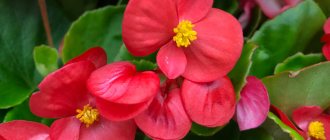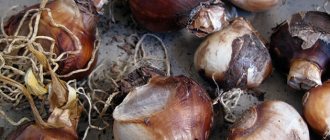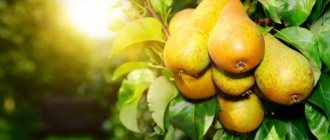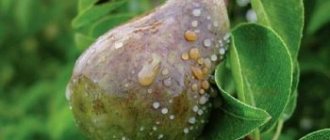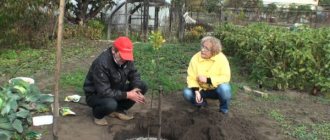Why doesn't the pear tree bloom?
There may be many reasons why a pear tree does not bloom and subsequently bear fruit.
Lack of pollinator
If a single pear is planted in the garden, it is quite possible to make it bloom, but it will not bear fruit. This is due to the fact that the fruit and berry crop is cross-pollinated. To get pears every year, you should plant at least two trees. The second will serve as a pollinator, and all the pollination work will be done by bees and other insects. You need to select varieties for planting in such a way that they have the same flowering period.
Pear is one of the leaders in capriciousness in care
Important! In the absence of insects, pears can be pollinated artificially using a brush. This method is labor-intensive, but effective.
Freezing
If the soil freezes to a depth of 20-25 cm in the absence of snow cover, the root system of the pear may freeze. Such a crop will lag far behind in development, may not bloom, and you can forget about fruiting.
Pear trees should be reliably protected from the cold
In order not to wonder why the pear tree does not bloom, it should be mulched before the onset of autumn frosts.
Since no gardener can solve the weather problem, it is important to choose the right varieties.
Incorrect feeding
If a young pear blooms poorly and does not bear fruit, it may not have enough nutrition. If the plant is planted on poor soil, the tree does not have enough resources to develop normally. The absence of flowering indicates a deficiency of potassium, phosphorus and nitrogen.
In summer, it is recommended to fertilize the crop several times:
- the first feeding is done when the buds begin to wake up;
- re-fertilization is required when flowering occurs;
- the third feeding is done when flowering ends;
- For the fourth and fifth time, foliar feeding is carried out in the summer.
For the first three feedings, nitrogen fertilizers (urea solution or bird droppings) are used. In the latter case, phosphorus and potassium compounds are used.
Important! In the autumn, nitrogen-containing fertilizers should never be used, as they provoke leaf growth, which can be detrimental to the crop before the onset of winter.
Incorrect landing
Sometimes the answer to the question why a pear tree does not bloom lies in the fact that the crop was transplanted incorrectly.
If a pear is planted incorrectly, it will not bloom.
The most important thing not to do is to deepen the seedling too much. In this case, there will be a significant delay in the development of culture. The fruiting period will begin 5-6 years later. The frost resistance of the tree will also decrease. At the same time, the pear itself may well look outwardly healthy.
Diseases and pests
Columnar or any other type of pear may not bloom or produce a poor harvest due to pests. In particular, because of the copperhead, which, after the onset of cold weather, begins to feed on pear juice. After such an attack, the pear will not bloom or bear fruit the next year.
Flowering may not occur due to:
- black cancer;
- fruit rot;
- scab.
Timely identification and elimination of the problem will preserve fruitfulness.
Incorrect cropping
Another reason why a pear may stop blooming and bearing fruit is improper pruning of the plant and its complete absence. Every gardener should know by heart how to properly prune pear trees:
- remove shoot tips;
- eliminate lower branches at forks;
- remove branches that grow near the trunk or too close to each other;
- cut off excess young growth.
For normal development, pear trees require proper pruning.
If the crop is not regularly pruned, it will begin to thicken and receive little light. In such circumstances, there is no point in wondering why there are no fruits on the pear.
Lack of lighting
If the pear tree has not bloomed after seven years of planting, there is a high probability that the planting site was initially chosen incorrectly. If there is not enough sunlight, the plant will not have enough energy to form flowers. Such trees tolerate winter much worse and most often die within the first few years after planting.
Increased soil moisture
Increased soil moisture can also cause a pear tree to stop blooming. This happens if you plant a plant in lowlands, wetlands, and in areas where groundwater is located in close proximity to the soil surface.
Adverse weather conditions
A snowless but frosty winter can cause the root system to freeze. Even if the pear tree does not die, it will feel weakened and flowers and fruits are unlikely to appear.
A similar problem will arise if frost occurs during the formation of flower buds.
Varietal features
The lack of flowering and fruiting may also be due to incorrect selection of varieties. You should select zoned plant species for specific areas.
On a note! If the growing region is characterized by harsh winters, only frost-resistant pears should be planted.
Plant damage by pests
What to do if the pear does not bear fruit? Professionals recommend inspecting the plant for pests. For example, the copperhead feeds on the young buds of the plant, completely damaging them. Alatar will help eliminate the insect. The flower beetle is already feasting on flowers. He is eliminated by Kinmiks.
The fruit moth also causes significant harm. She eats the core of the ovaries, which subsequently crumble. To treat the tree, Ivanhoe is used, which is sprayed on the crown in May and June.
Advice! The use of complex tank formulations will help eliminate different types of insects and many fungal infections at the same time.
When does the pear tree begin to bear fruit?
Why plum does not bear fruit, and what to do about the problem
A crop such as pear does not have a clear age for the beginning of fruiting. This indicator varies widely for different varieties. For example, the Annushka variety produces its first fruits within 1-2 years after planting, the Chizhevsky variety, Rogneda and Yakovlev (In Memory of Yakovlev) - after 3-4 years, Rossoshanskaya Late - after 5-6 years.
Abundant flowering of a pear tree does not guarantee further fruit appearance
When cultivating varieties Bergamot, Favoritka or Limonka, you will have to wait at least 7 years.
Ways to stimulate flowering
Marbled pear: description of the variety, pollinators
When answering questions about why a pear does not bear fruit and what to do to solve the problem, one cannot ignore the mention of some ways to stimulate the flowering of the crop:
- Hill up the tree periodically, making sure that the root collar is not located too high and is not excessively buried.
- If the bark is cracked due to frost, it should be covered with garden pitch or clay.
- Regularly use insecticides for preventive purposes.
- Provide the pear with reliable protection from drafts.
- Increase soil fertility using organic fertilizer. Compost, manure and peat are best suited for this purpose.
Technique 5. Alternating fertilizing
In the spring of the second year, as soon as the snow melts and the soil dries out a little, scatter 3 tablespoons under each pear seedling in a circle near the trunk. ammonium nitrate and rake into the soil.
And then, every 2 weeks until mid-July, apply urea (according to the instructions) under the plant and incorporate it into the soil - it will help the pear grow leaves.
In addition, it is useful to add sodium humate to each seedling three times (according to the instructions): during bud break, in July and at the end of August. This stimulant will cause powerful growth of foliage and shoots, significantly accelerating the entry of pear seedlings into fruiting.
- Feeding calendar for apple and pear trees from spring to autumn
Regular application of fertilizers is not only the key to a bountiful harvest, but also protection from many diseases. After all, a strong tree resists bacteria and pests more easily than a weakened and stunted one. To ensure your garden always makes you happy, do not skip basic feeding.
You will find even more useful tips and recommendations from experts on the pages of the Gardener and Gardener magazine. Subscribe to the publication to receive timely information about all the most important gardening work. And if you have any questions, write to the editorial office. Experienced specialists will definitely answer them.
Prevention of the problem
Any problem, including the lack of fruiting in a pear, is easier to prevent.
Upon landing
For planting, you need to choose a place well lit by the sun, where there are no sharp gusts of wind. If the site is located in a lowland, an earthen mound should be made for planting pears. This will avoid moisture accumulation in the root zone.
Important! In no case should you plant corn, sunflowers and other crops that quickly deplete the soil in close proximity to the pear.
Features of care
In the process of caring for the plant, it is recommended to adhere to the following simple rules:
- Water the trees on average once every two weeks, pouring 5-7 buckets of water onto each adult tree.
- If there is a risk of roots freezing, mulch the crop in the autumn.
- In spring, carry out preventive treatment of pear trees against parasites and diseases.
- Do not prune the crop before the fruiting period begins.
Variety selection
Most of the problems associated with trees freezing in winter arise when planting heat-loving varieties in regions with harsh winters. Before planting a crop on a site, it is strongly recommended to make inquiries about what growing conditions are comfortable for the selected variety.
If you take care of the crop, it will bloom and bear fruit without problems
Gardening tips
In addition to the above, to regularly obtain fruits from pears, experienced gardeners recommend:
- Use rye to insulate tree roots in winter. To do this, cereals should be sown directly under the tree, and mowed in the fall and not removed. Rye roots that remain in the soil will improve soil quality as they decompose.
- If the groundwater in the area is too deep, the pear, despite the characteristics of the variety, will begin to bear fruit only when its root system reaches the aquifer.
- With proper care, some pear varieties can produce fruit for 100 years.
The lack of flowering and fruiting of pears is not a reason to give up. It is important to understand the cause of the problem and try to eliminate it.
Mistakes when planting a plant
Pear fruit does not bear fruit well even if the rules for planting seedlings are not followed. It is very important to comply with the requirements for the placement of the root collar and certainty in accordance with the cardinal directions.
Rules for planting planting material:
- The root collar (the place where the trunk meets the branches, not the graft) should be at the level of the soil surface. Significant deepening leads to the fact that the tree begins to bear fruit 2-3 years later than expected. Too shallow penetration of the root system leads to winter freezing and death of the plant.
- Place the seedling as it grew in the nursery. For example, if the branches in the nursery were located to the south, then they should grow accordingly on the site. You can understand how to plant a plant by looking closely at the color of the bark on the trunk - where it is darker is the south, where it is lighter is the north.
Advice! If the plant has already been planted, then the situation is corrected as follows: if it is significantly deepened, carefully dig up the tree and add nutritious soil under it. If the plant is planted too shallowly, a pile of nutritious soil is thrown onto the stem.

